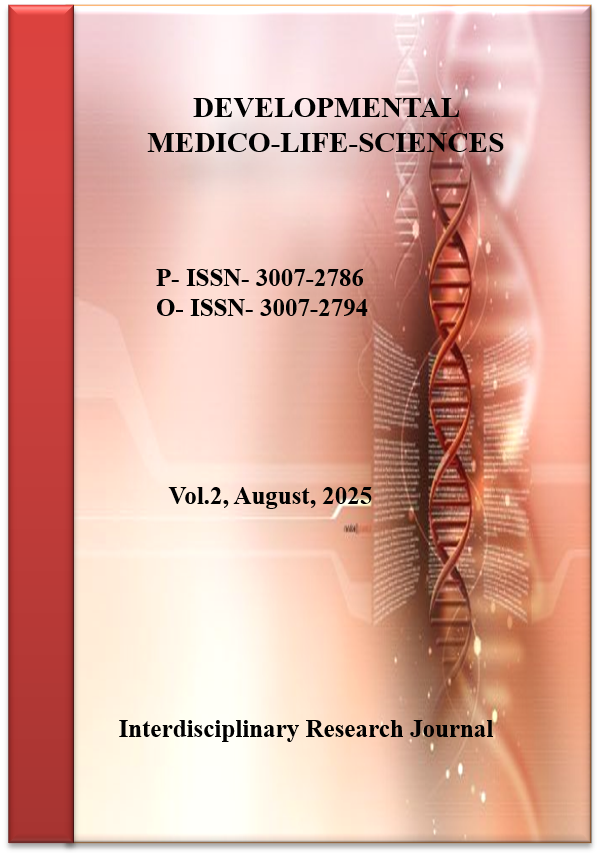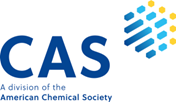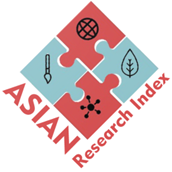Respiratory Physiology and Clinical Manifestations of Obstructive Sleep Apnea: Pathophysiological Mechanisms and Cardiovascular Consequences
Sleep Apnea: Mechanisms and Cardiovascular Effects
DOI:
https://doi.org/10.69750/dmls.02.08.0138Keywords:
Obstructive sleep apnea, respiratory physiology, intermittent hypoxemia, cardiovascular risk, hypertension, arrhythmiasAbstract
Background: Obstructive sleep apnea (OSA) is a highly prevalent sleep-related breathing disorder characterized by recurrent upper airway collapse, intermittent hypoxemia, and sleep fragmentation. Beyond sleep disruption, OSA is increasingly recognized as a systemic condition with strong associations with cardiovascular morbidity and mortality.
Objectives: The purpose of this study was to examine the link between OSA severity, respiratory physiology, clinical symptoms, and cardiovascular implications in adult patients with suspected OSA.
Methods: A prospective study was carried out at two tertiary care hospital in Lahore, Pakistan, between March 2023 and March 2024. Ninety patients aged 30-70 years performed a standardized clinical examination, including the Epworth Sleepiness Scale (ESS), anthropometry, nighttime polysomnography (PSG), arterial blood gas measurement, and cardiovascular evaluations such as blood pressure, electrocardiography, echocardiography, and biomarker testing. The severity of OSA was determined using the apnea-hypopnea index (AHI). The data was analyzed using SPSS v26.0, with a significance level of p <0.05.
Results: The average age was 49.6 ± 10.8 years, and 64.4% were men. Patients with severe OSA exhibited substantially greater BMI, neck circumference, and ESS ratings compared to moderate OSA (p < 0.001). PSG results showed a decline in mean nocturnal SpO₂ (92.4% in moderate vs. 87.2% in severe, p < 0.001), oxygen desaturation index, and alertness index. Severe OSA was associated with higher rates of cardiovascular problems, including as hypertension (78.1%), resistant hypertension (21.9%), atrial fibrillation (18.8%), diastolic dysfunction (46.9%), pulmonary hypertension (28.1%), and increased hs-CRP (6.9 ± 2.2 mg/L).
Conclusion: OSA severity strongly correlates with respiratory impairment, systemic inflammation, and cardiovascular dysfunction. Early recognition and comprehensive management are essential to reduce long-term cardiovascular risk and improve patient outcomes.
Downloads
References
Ryan S. Mechanisms of cardiovascular disease in obstructive sleep apnea. J Thorac Dis. 2018;10(Suppl 1):S29-45. doi:10.21037/jtd.2017.10.03
Tietjens JR, Claman D, Kezirian EJ, et al. Obstructive sleep apnea in cardiovascular disease: a review of the literature and proposed multidisciplinary clinical management. J Am Heart Assoc. 2019;8(6):e010440. doi:10.1161/JAHA.118.010440
Labarca G, Dreyse J, Drake L, et al. Hypoxemic burden in obstructive sleep apnea: clinical usefulness beyond the apnea–hypopnea index. Sleep Breath. 2021;25(1):95-103. doi:10.1007/s11325-020-02064-7
Yeghiazarians Y, Jneid H, Tamis-Holland JE, et al. Obstructive sleep apnea and cardiovascular disease: a scientific statement from the American Heart Association. Circulation. 2021;143(25):e711-30. doi:10.1161/CIR.0000000000000988
Javaheri S, Barbé F, Campos-Rodriguez F, et al. Interactions of obstructive sleep apnea with cardiovascular physiology: clinical implications. J Am Coll Cardiol. 2024;83(8):1124-34. doi:10.1016/j.jacc.2024.02.059
DiCaro MV, Kanaan AO, Fernandez C, et al. Effects of obstructive sleep apnea on the cardiovascular system: mechanisms and implications. J Clin Med. 2024;13(11):3223. doi:10.3390/jcm13113223
Albertsen IE, Nissen L, Larsen JM, et al. Cardiovascular risk in young adults diagnosed with obstructive sleep apnea: a nationwide cohort study. J Am Heart Assoc. 2024;13(3):e033506. doi:10.1161/JAHA.123.033506
Grewal N, Yadava M, De Backer W, et al. Impact of obstructive sleep apnea treatment on cardiovascular outcomes: a systematic review and meta-analysis. Lancet Respir Med. 2024;12(5):556-66. doi:10.1016/S2213-2600(23)00556-X
Eulenburg C, Weinreich G, Bitter T, et al. Prevalence of obstructive sleep apnea and cardiovascular outcomes in patients with coronary artery disease. Ann Am Thorac Soc. 2023;20(5):676-85. doi:10.1513/AnnalsATS.202208-676OC
Bushi G, Teshome T, Mekonnen G, et al. Obstructive sleep apnea and cardiovascular disease in diabetic populations: a systematic review and meta-analysis. J Diabetes Complications. 2023;37(5):108432. doi:10.1016/j.jdiacomp.2023.108432
Yasir M, Farooq S, Mahmood S, et al. Cardiovascular outcomes in patients with sleep-disordered breathing: mechanisms and evidence. Front Neurol. 2022;13:801167. doi:10.3389/fneur.2022.801167
Marin JM, Sánchez-de-la-Torre M, Barceló A, et al. Effect of CPAP on cardiovascular events in patients with acute coronary syndrome and obstructive sleep apnea (ISAACC trial). Lancet Respir Med. 2020;8(4):359-67. doi:10.1016/S2213-2600(19)30271-1
Zapater A, Sánchez-de-la-Torre M, Benítez I, et al. Effect of sleep apnea on cardiovascular events in different acute coronary syndrome phenotypes. Am J Respir Crit Care Med. 2020;202(12):1698-706. doi:10.1164/rccm.202004-1127OC
McNicholas WT. Translation of obstructive sleep apnea pathophysiology into clinical phenotypes to tailor treatment. J Thorac Dis. 2023;15(5):2340-50. doi:10.21037/jtd-22-23494
Lv R, Li H, Chen Y, et al. Pathophysiological mechanisms and therapeutic strategies in obstructive sleep apnea syndrome. Signal Transduct Target Ther. 2023;8:9. doi:10.1038/s41392-023-01496-3
Mazzotti DR, Keenan BT, Lim DC, et al. Symptom subtypes of OSA predict incidence of cardiovascular outcomes. Am J Respir Crit Care Med. 2019;200(4):493-506. doi:10.1164/rccm.201808-1509OC
Azarbarzin A, Sands SA, Stone KL, et al. The sleep apnea–specific pulse rate response predicts cardiovascular morbidity and mortality. Am J Respir Crit Care Med. 2023;207(12):1546-55. doi:10.1164/rccm.202303-0524OC
Lisan Q, Van Sloten TT, Marques-Vidal P, et al. PAP prescription and mortality in obese patients with severe obstructive sleep apnea. JAMA Otolaryngol Head Neck Surg. 2019;145(6):509-15. doi:10.1001/jamaoto.2019.0281
McEvoy RD, Antic NA, Heeley E, et al. CPAP for prevention of cardiovascular events in obstructive sleep apnea. N Engl J Med. 2016;375(10):919-31. doi:10.1056/NEJMoa1606599
Benjafield AV, Ayas NT, Eastwood PR, et al. Effect of positive airway pressure on cardiovascular outcomes in coronary artery disease patients with nonsleepy OSA. Lancet Respir Med. 2025;13(1):e5-xx. doi:10.1016/S2213-2600(25)00002-5
Mazzotti DR, Keenan BT, Lim DC, et al. Positive airway pressure, mortality, and cardiovascular risk in older patients with OSA. JAMA Netw Open. 2024;7(2):e2823539. doi:10.1001/jamanetworkopen.2024.23539
Aurora RN, Punjabi NM. Obstructive sleep apnea and type 2 diabetes mellitus: pathophysiologic interactions and therapeutic approaches. Chest. 2019;156(1):184-95. doi:10.1016/j.chest.2019.03.033
Javaheri S, Barbé F, Campos-Rodriguez F, et al. Sleep apnea: types, mechanisms, and clinical cardiovascular consequences. J Am Coll Cardiol. 2017;69(7):841-58. doi:10.1016/j.jacc.2016.11.069
Ryan S, McNicholas WT. Intermittent hypoxia and activation of inflammatory molecular pathways in OSA. Arch Physiol Biochem. 2019;125(1):1-10. doi:10.1080/13813455.2018.1469680
Drager LF, McEvoy RD, Barbe F, Lorenzi-Filho G, Redline S. Sleep apnea and cardiovascular disease: lessons from recent trials and need for team science. Circulation. 2017;136(19):1840-50. doi:10.1161/CIRCULATIONAHA.117.029400






















